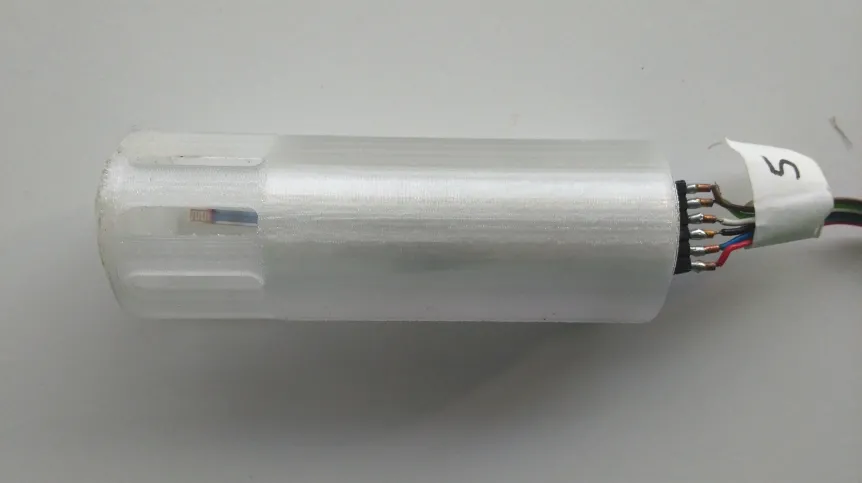
Chlorine sensors protect employees of water treatment and chemical companies against poisoning. They can also be used to control kilometres-long external pipelines. Innovative sensor, little susceptible to varying humidity and temperature, is being developed by Marta Fiedot, a PhD student at Wroclaw University of Technology.
"In Wroclaw water company, with which I cooperate, chlorine is added to the water on one of the final stages of treatment. There are rooms with cylinders of liquefied gas. When one cylinder connected to the system runs out, another has to be connected. Gas can escape while changing cylinders, and in unusual situations, such as a leak from a cylinder or a leak in the chlorine supply system" - explained Marta Fiedot in an interview with PAP.
Wroclaw water company is well aware of the danger. Chlorine can cause acute allergic reactions, poisoning, and its high levels can cause death. The problem is that - paradoxically - the higher the gas concentration in the air, the less perceptible it is. Hence the need for sensors, without which it is impossible to detect its presence.
In the laboratory, the presence of even the smallest amounts of gas can be detected. But Marta Fiedot from the Faculty of Microsystem Electronics and Photonics, Wroclaw University of Technology is working on a specific sensor. It must be resistant to changes in humidity and temperature. Sensors of this type are needed at the Municipal Water and Sewage Wroclaw, where large amounts of chlorine are stored. According to Marta Fiedot, the company has various sensors, but they do not always work optimally with large changes in humidity and temperature. Therefore, researchers from Wroclaw University of Technology together with the company employees are trying to build sensors that will perform in tough real-life conditions.
The sensor developed by Marta Fiedot is small. It has the size of a match, and its structure uses nanoparticles. On the ceramic plate the researcher placed electrodes draining and supplying electronic signal from and to the gas-sensitive layer. "In a typical sensor, gas-sensitive layer consists of various materials composed of oxides. We added various kinds of nanoparticles to oxides. In chlorine sensors we use nanoparticles of platinum, gold and silver to make them respond faster and more selectively" - explained Marta Fiedot .
Tests conducted in laboratories and the Municipal Water and Sewage Wroclaw storage rooms were successful. The process requires optimisation. Scientists are currently working on the sensor housing. Only then the product will be market-ready.
"We are trying to fit the sensor in a special housing the size of a mobile phone so that it can be mounted on a pipe or in the target installation. It must have a built-in system, which collects data, alerts users of any threats" - explained the PhD student.
The sensor itself is only few cm long, but due to the required electronics the whole device will certainly not be miniature. Alerting will be carried out directly by the device in the form of an audio signal or via a PC. The sensor will transmit data to the target computer. Wroclaw water supply already has a system that reads data from sensors placed in various places. Engineers are trying to make their device compatible with this system.
Studies have shown that the demand for this type of sensors is large. As winner of the "Grant Plus" programme, Marta Fiedot worked not only with the Municipal Water and Sewage Wroclaw, but also with the three companies involved in the construction and sale of sensors. She believes that these companies would be interested in marketing the sensors. According to the researcher, chlorine sensors are a niche market that can be filled. The estimated cost of the new sensor is competitive compared to current prices.
Manufacturers produce chlorine in considerable quantities. It is a by-product of many chemical reactions. Another potential industrial partner of the researchers is the company PCC Rokita, which operates external pipelines with a length of several kilometres. The sensors could be used to detect possible leaks in the pipelines. It appears that the scientist Wrocław will be able to propose sensors built according to her own design.
PAP - Science and Scholarship in Poland, Karolina Olszewska
kol/ agt/ mrt/
tr. RL













